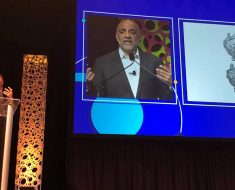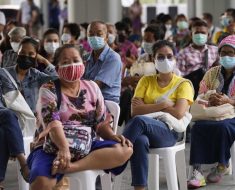
Those of us who have been in health IT for a while have heard the common refrain: Healthcare is evolving, and we need to keep up with digital transformation. But what does this actually mean for clinicians, and what are the results?
As we work with healthcare and IT leaders on their digital journeys, we know that two factors are constant, despite technology shifts: the patient is at the center of care and care providers are dedicated to positive patient outcomes.
The new patient paradigm
As healthcare has evolved, so too have patients. They’ve become savvy shoppers, thanks in part to instant access to vast quantities of information, as well as their appreciation for seamless interactions in other consumer engagements. This leads to high expectations for the healthcare system, whether for access, convenience or responsiveness.
Healthcare organizations are responding to these new demands, in many cases, with the support of technology: mobile apps simplify scheduling (and send reminders), wayfinding tools help a patient navigate to an appointment, video conferencing enables rapid specialist consults, and in-home monitoring keeps everyone on track. The result: the best and quickest diagnosis and treatment possible, for a better patient outcome.
Caring for the care provider
Thankfully an improved experience is not an either/or proposition. Efforts to ensure patient satisfaction don’t mean a lesser experience for the physicians, nurses or other members of the care team. In fact, improving the patient experience can directly translate to a better experience for everyone.
According to the 2019 HIMSS U.S. Leadership and Workforce Survey, clinician and patient experience are among the most important priorities in health IT. For example, “culture of care and care coordination” represents one of the most critical challenges in healthcare and an important component of clinician experience and satisfaction. Secure reliable, and seamless communication among clinicians, from the sharing of medical records or images, to voice and video consultation, can streamline clinical workflow.
At Parkview Medical Center in Pueblo, Colo., CIO Steve Shirley addressed the challenge head-on: “When we looked at collaboration between the clinicians in our hospital—doctors, nurses, phlebotomists and pharmacists, for example—we realized that they were operating on different ‘islands,’” he said.
The answer for Shirley and his team was mobile technology, which frees clinicians to focus on the more meaningful work of patient care.
“We developed a concept we call mobility-enabled collaborative caretaking, which gives us an opportunity to bring clinicians together to practice medicine, working with patients using the same mobile device with the same information.”
Parkview achieved 100% clinician adoption of the new technology, which led to a consistent and improved clinician experience.
Parkview also realized a 60-minute reduction—per nurse, per shift—in the time spent on documentation and coordination. This gave each nurse more time to spend at the patient bedside, for better quality of care and a better clinician—and patient—experience overall.
Shirley also credits the new approach with a 210% increase in the medical center’s HCAHPS score, the patient’s view of their care experience.
Interested in learning more on how to use technology to help care for the care team? Find out how one healthcare organization is driving outcomes.
Source: Read Full Article





